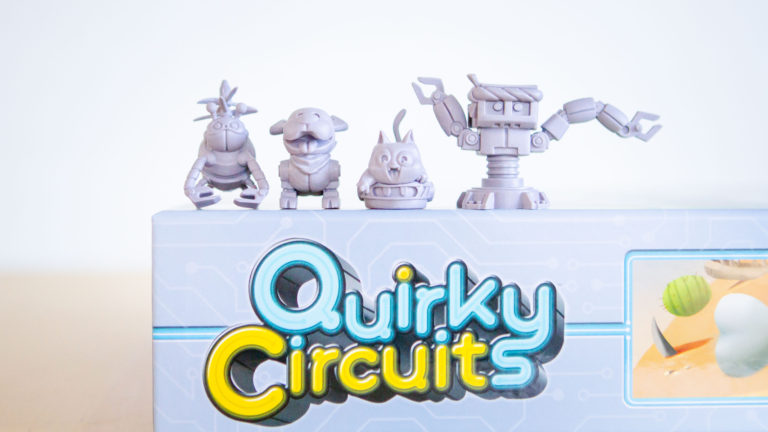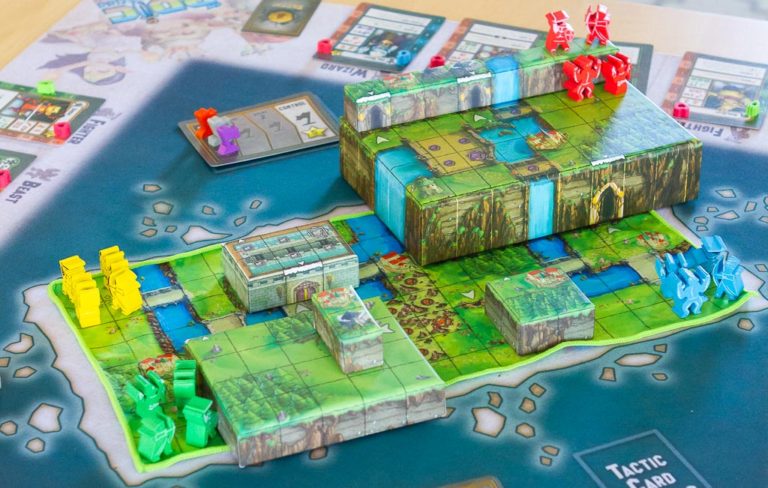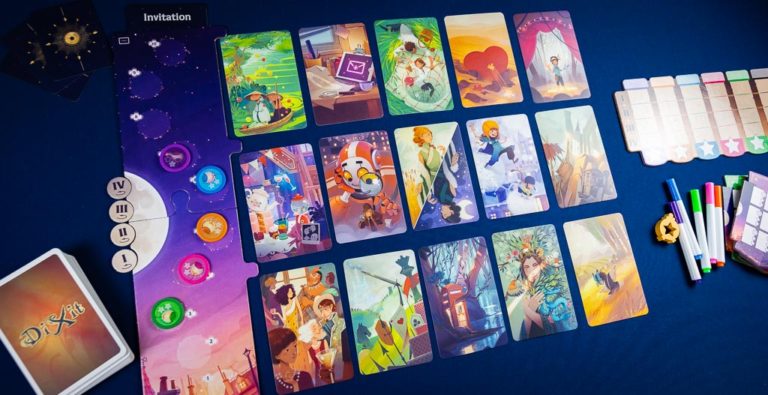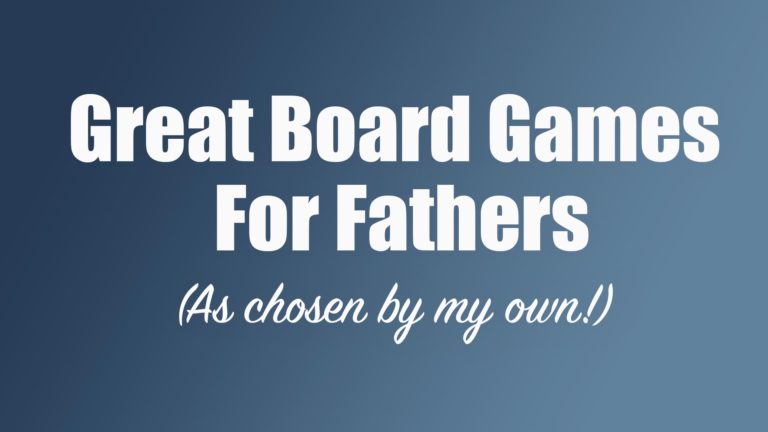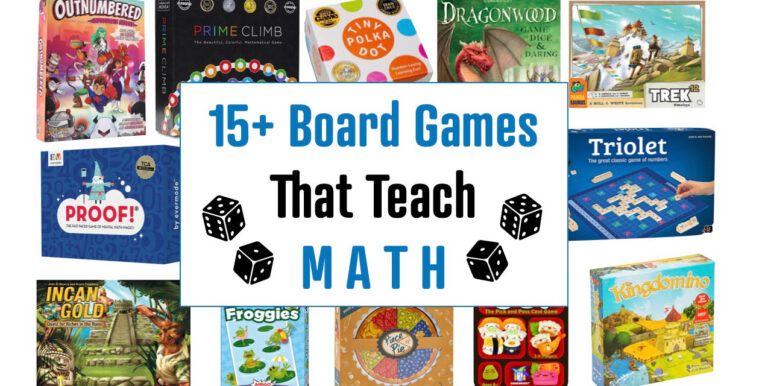Storytelling is part of our daily routine with our children.
Whether its reading a book aloud or making up a story of your own, telling stories is one of the most important things you can do to promote your child’s future reading ability.
We love to read and incorporate creativity storytelling throughout the day. One of the ways you can do that can be through games. There are a great selection of games that encourage storytelling or incorporate it into the game itself.
One of our current favorites, (and a beautiful game to-boot!) is Fairy Tile.
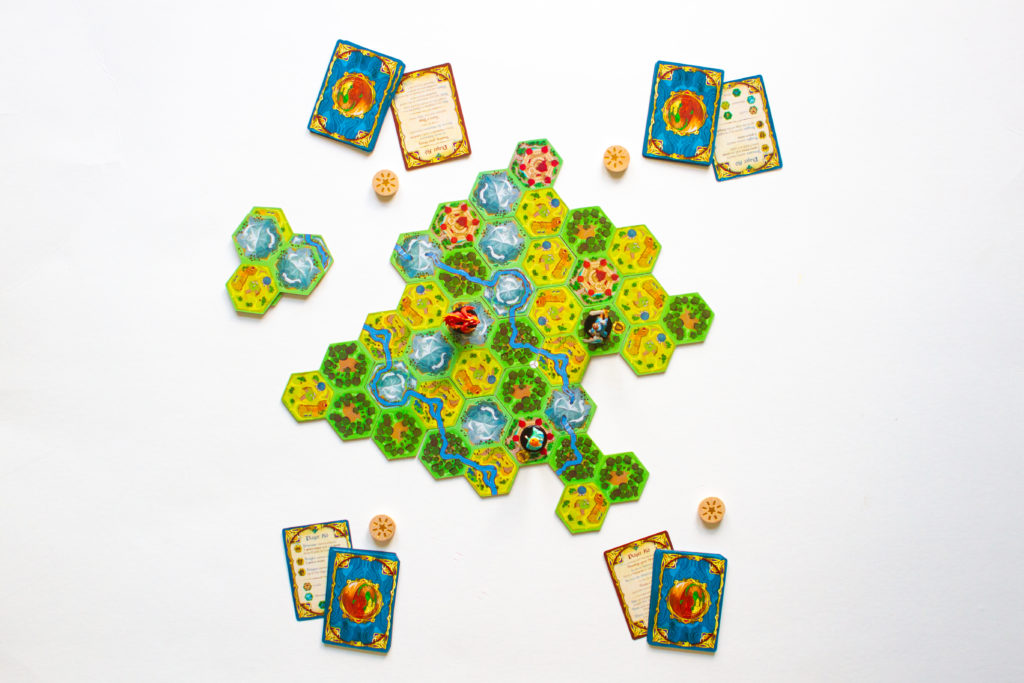
How do you play Fairy Tile?
Fairy Tile is a tile placement game for 2 – 4 adventurers where players will move the Princess, Knight, and Dragon around to specific locations on the board to fulfill the conditions on the players’ cards.
The game comes with a deck of page cards, which are shuffled up and dealt out to the players. Each card functions as a page in the fairy tale and features a scene that you must fulfill in order to develop your story. Each player holds exactly one card in their hand with the rest in a face down stack next to them on the table. This is your book for the game.
The game begins with just three tiles on the board and the characters in their starting positions in the Kingdom.
On your turn you can either Develop your Story or Turn a Page.
Develop your Story:
To develop your story you first go on an adventure. When you do this you either move a character or add a land tile. Then check if you can recount your adventure.
Move a Character:
Each character moves uniquely. The Princess can move exactly one location space away from her starting position and can also jump from castle to castle. The Knight must move exactly two location spaces away from his starting position. While the Dragon flies in a straight line from his starting position over location spaces, moving as far as possible, until he reaches the edge of the board.
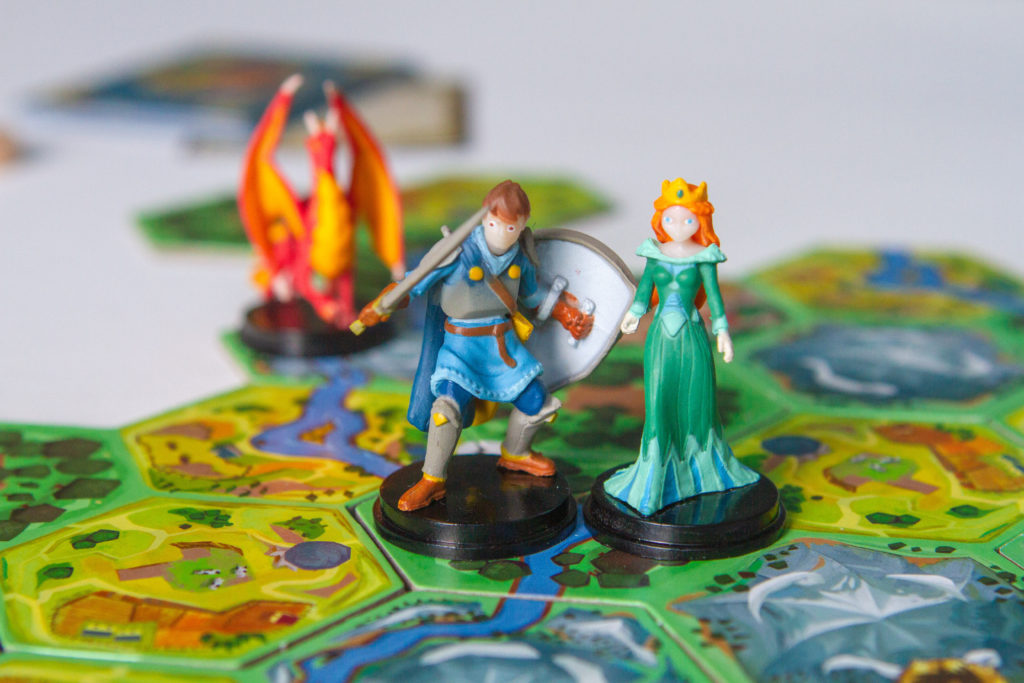
Add a Land Tile:
If you choose to add a land tile, you’ll take the top land tile from the stack and add it to the Kingdom.
The land tiles feature different types of terrain, Plains, Forests, Mountains, and Castles. Some locations are divided by a River. When placing a new tile, these rivers must be continued and can never be abruptly ended.
Once all of the Land tiles are added to the kingdom, you may no longer choose this development action.
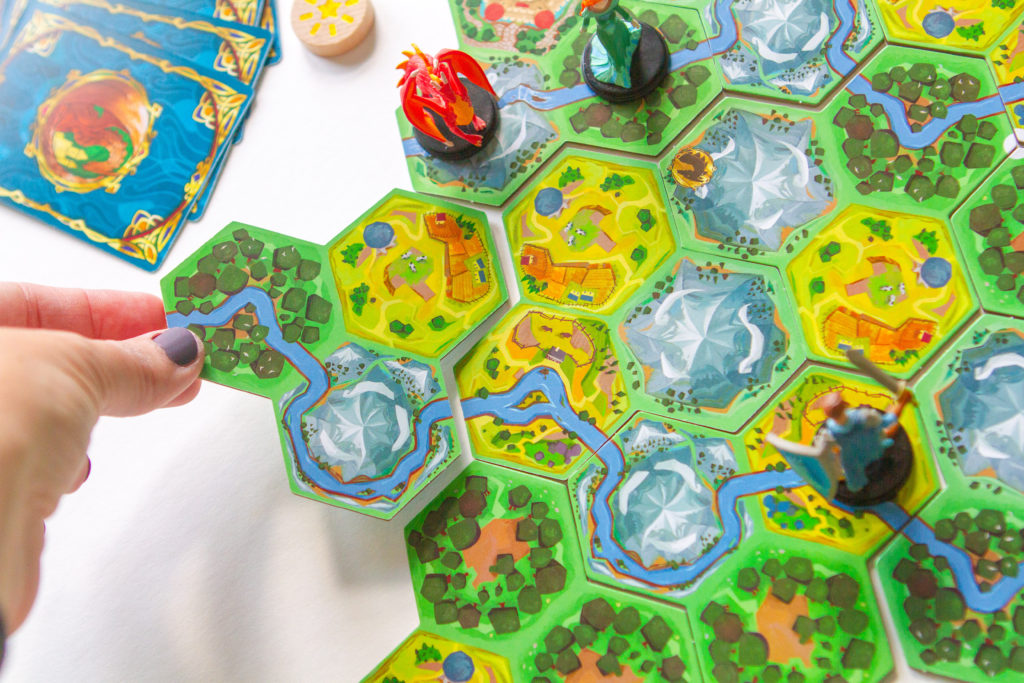
Recount the Adventure:
If, after taking your actions, the characters are placed or were moved in such a way that you’ve fulfilled the objective on your page card in your hand, you may recount your adventure.
To do this, read the card aloud, then place it face up next to your book. You may now draw the next page in your book.
Turn a Page:
If you choose to not to develop your story by going on an adventure, then you may turn a page. Place the page you have in your hand under your stack of page cards face down, then draw the top page card of you book.
Each player also has a Magic Token. The Magic Token allows you to take a second go on an adventure action on your next or a future turn. When you turn a page, you may turn over your Magic Token from the blank side so the Magic side is face up. When you use your Magic Token, you’ll flip it back over to its blank side.
The Magic Token is the only way for players to take two actions on their turn.
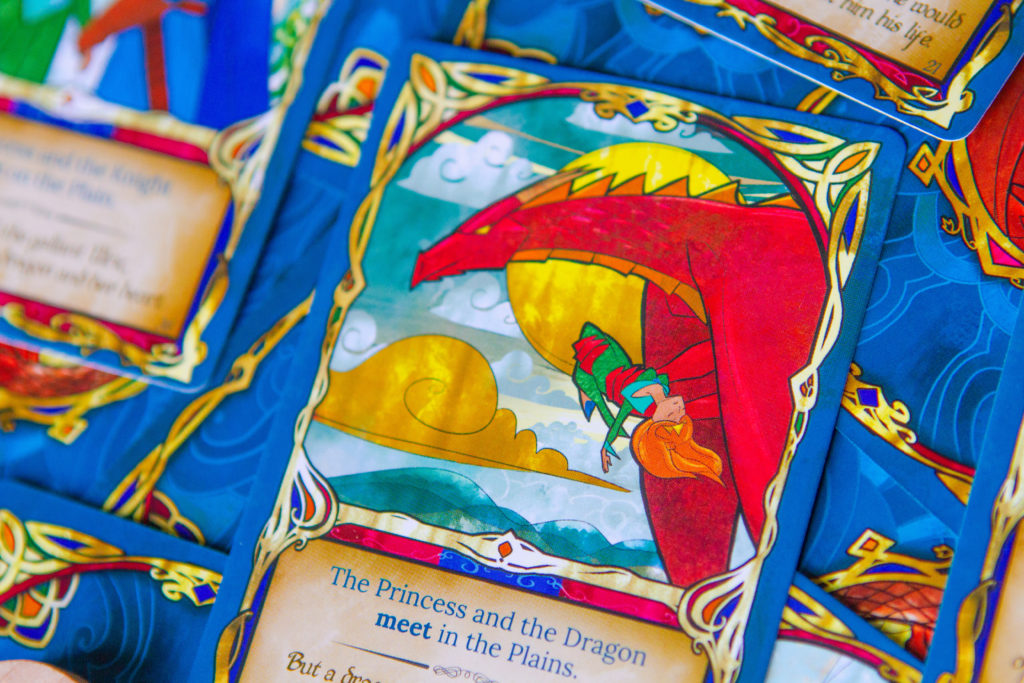
End of Game
The game ends immediately as soon as a player Recounts the Adventure on the last page of their Book. This player is the winner.
Now you can all read your story! On the bottom of every card there is a number. At the end of the game, you can put the cards of the adventures you have recounted in numerical order so you can read the story chronologically!
What do we think?
I don’t want to bury the lead here, I love Fairy Tile. This is a simple, beautiful, well produced game that we keep coming back to.
At first look I was blown away by the quality of the production. From the miniatures, to the tiles, to the storybook art, everything is just gorgeous and so inviting, both to adults and children.
It is also a very fun movement puzzle. Every turn provides players with a problem to solve. To fulfill your cards you need to figure out how to move your characters around on the board so that you can recount your story. Because each character moves differently, and every player needs the characters in different locations at a given time, you have to use your turn, and your magic token on occasion, to solve these little problems. Sometimes it is easy, allowing you to turn a page quickly, other times it takes multiple turns as the objective is a little more difficult. It’s a simple concept that still provides a fun challenge as everyone attempts to manage the board and the characters to suit their interests.
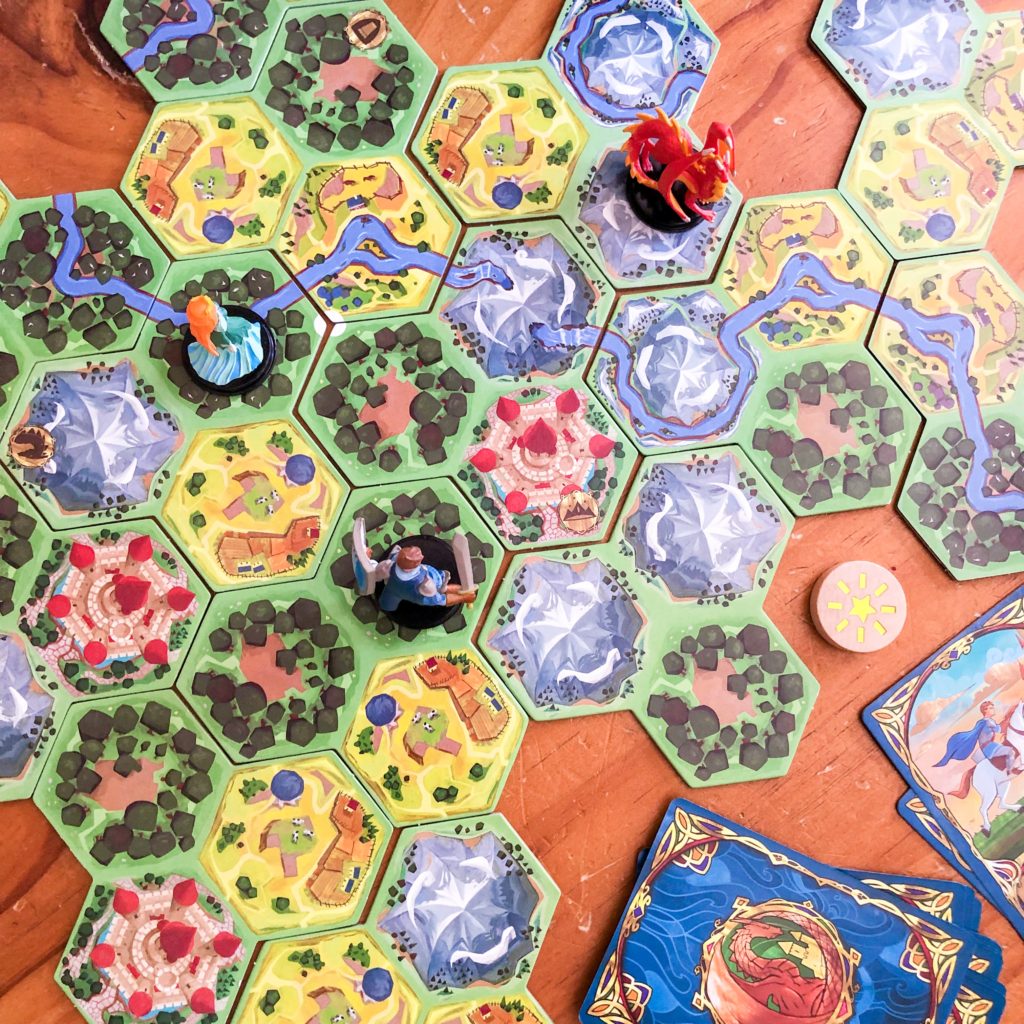
But after playing many games, my favorite part of Fairy Tile is how it weaves storytelling throughout the game, making the entire experience vibrant and engaging.
Each card is beautifully illustrated showing the various scenes players need to, in a sense, act out on the board. This art helps kids visualize the story and wonder what the characters are thinking, feeling, and doing as they go on their adventure.
There is a pretty high reading component involved in Fairy Tile. Players must be able to read and interpret the cards on their own to know what objectives they need to accomplish during their turn. Each card has both the objective clearly stated, and also some flavor text that tells the story, helping it come to life in the mind of the players and spark imagination.
I find that as the game plays and players are expanding the kingdom of Fairy Tile, moving the characters around the kingdom, the literary nature of the game really comes alive. You aren’t just moving a pawn from one space to another. You are sending the Princess on a daring adventure into the mountains to meet the dragon, or a Knight through the plains to make it to the large River.
This is why I’m so glad the game includes the beautiful (and fully painted!) miniatures that match the storybook cards. This completely adds to the experience and immerses the players in the story further.
Using this as a Storytelling Tool
I’m always looking for unique ways to spark creativity and excitement in my kids’ education. Whether you homeschool like us or not, Fairy Tile can be used as a great tool to do just that.
My daughter Alice is in the second grade and one of the ways we use Fairy Tile is as an inspiration for creative writing and storytelling.
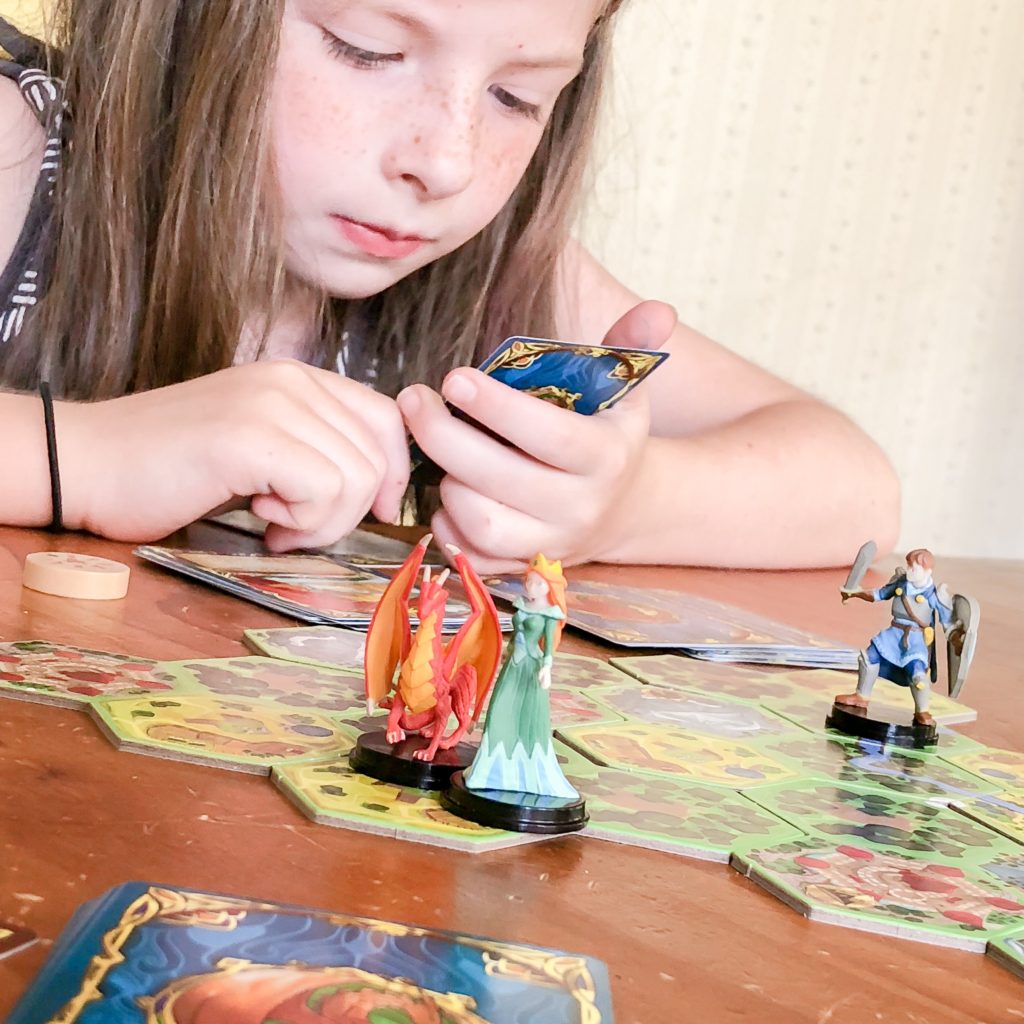
We’ll begin by playing the game. During the game, as we complete objectives and read pages, I’ll ask her what she thinks the characters are thinking. How would she feel if she met the dragon in the forest like the Princess? What are the motivations of the characters?
There are no wrong answers here. This is just a way for kids to think and engage with the story deeper, rather than just playing through the game.
Telling Their Own Story
After finishing and reading our stories to each other, I’ll have her grab a pencil and some paper and write out her own story. Here is where kids can use their creativity to tell the adventure their own way.
Maybe they want to tell the story as it happened during the game, remembering and retelling key events and moments. Perhaps there are some elements they want to change. Maybe they’ll make up a unique story entirely. This all broadens their thought processes, allows them to problem solve, imagine different scenarios, analyze thoughts and emotions, and express their own ideas. Through storytelling and writing, children have an amazing ability to explore and develop their unique voice.
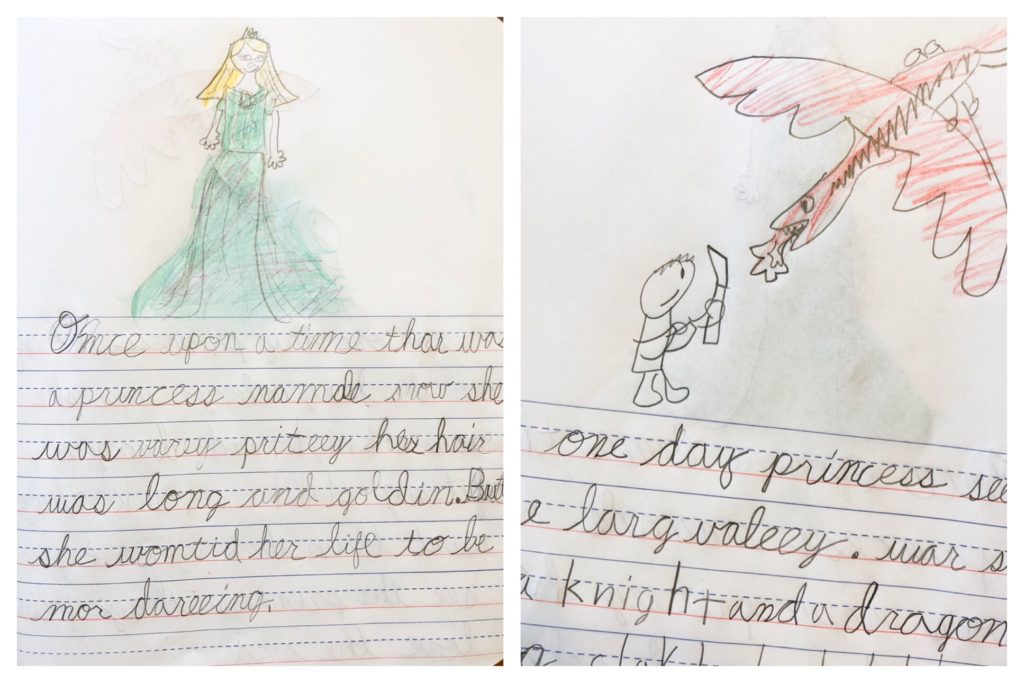
By playing the game first and inviting kids to think about what the characters are thinking, feeling, and what is motivating them, you help get their minds into that creative space where they can begin to craft their own story to tell.
This activity is not only fun, but it allows children to further develop their critical thinking skills, improve language and expand their vocabulary, enhances communication and listening skills, and can also increase their enthusiasm for reading itself.
Younger Storytellers
If your kids are younger and not quite ready to write their own story, encourage them to tell one! Our 5 and 3 year old boys love to sit on our laps as we play this game, helping move the characters around and, of course, listening to the story that forms.
I know this game gets their imagination working because they’ll be acting out scenes from the game for the rest of the day.
While our daughter is writing her story, we’ll have the boys draw one of their own, too! This is a great way to get your pre-readers involved in the creative and educational element.
And of course, when it’s all said and done and the stories have been written, drawn, and shared with the family, don’t forget to grab your favorite fairytale to read aloud to everyone!
A special thank you to our friends at IELLO for sending us a copy of Fairy Tile for review. If you would like to get your own copy, click HERE.
Title: Fairy Tile
Ages: 8+ for 2 – 4 players
Designers: Matthew Dunstan, Brett J. Gilbert
Artist: Miguel Coimbra
Publisher: IELLO
Published: 2018
* This post contains affiliate links at no cost to you. To read my full disclosure policy click here.*

